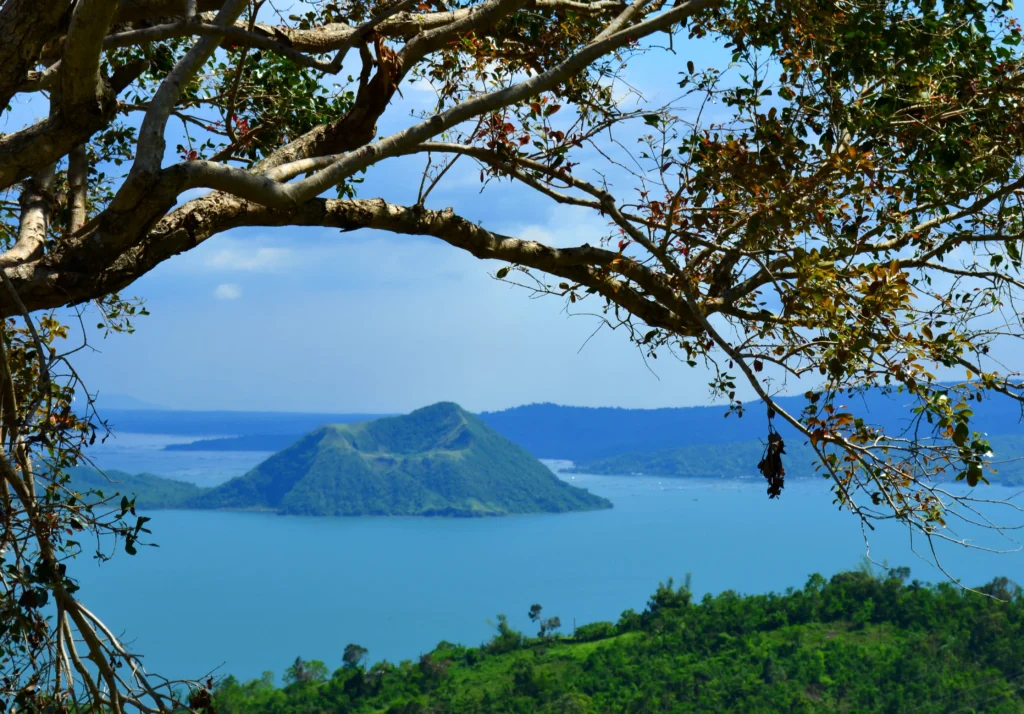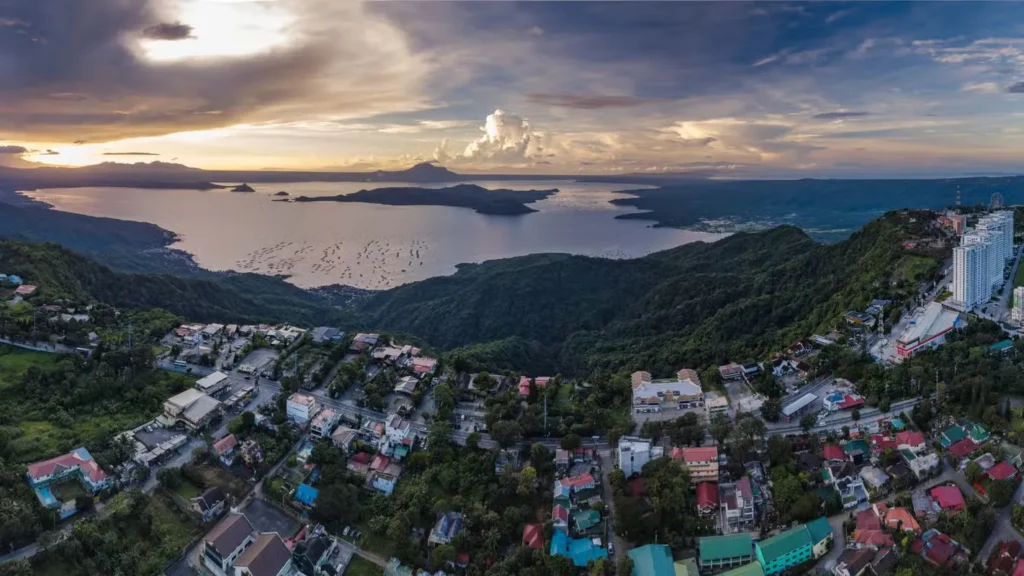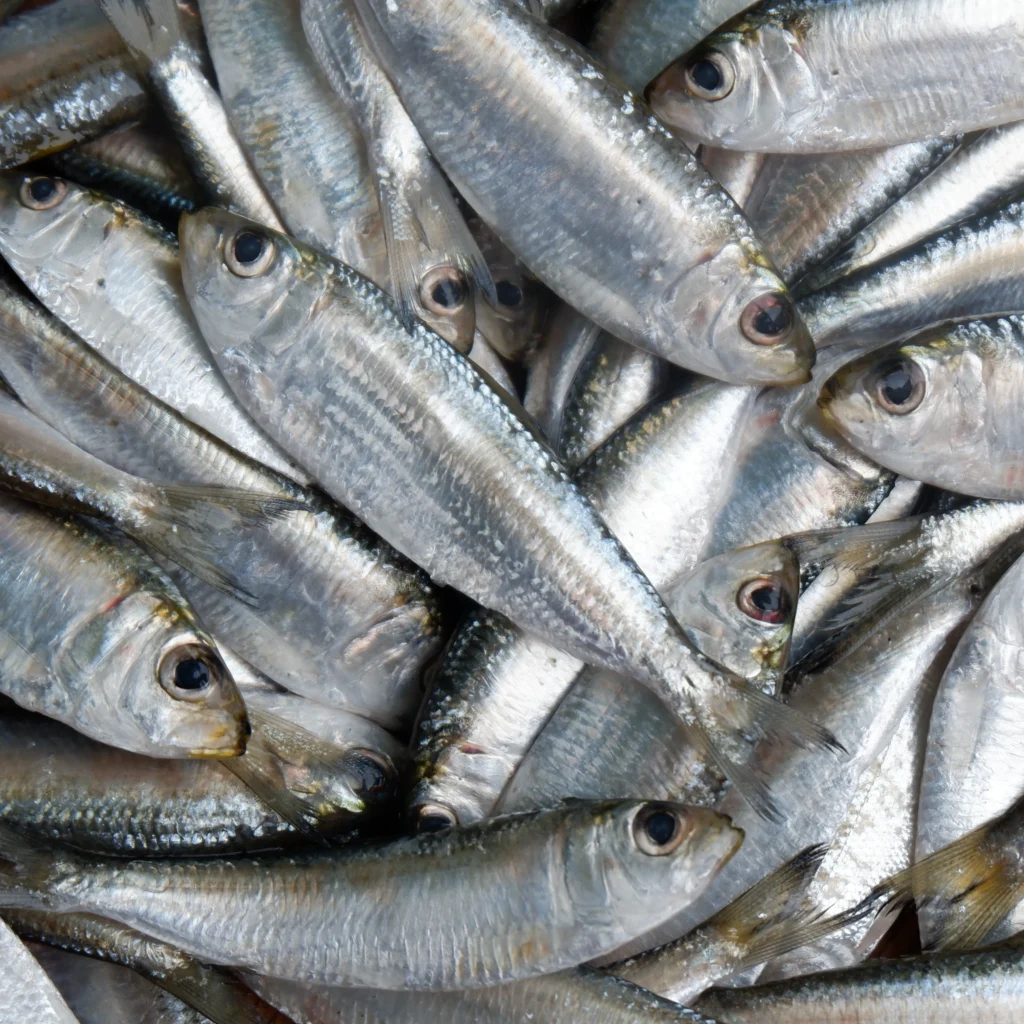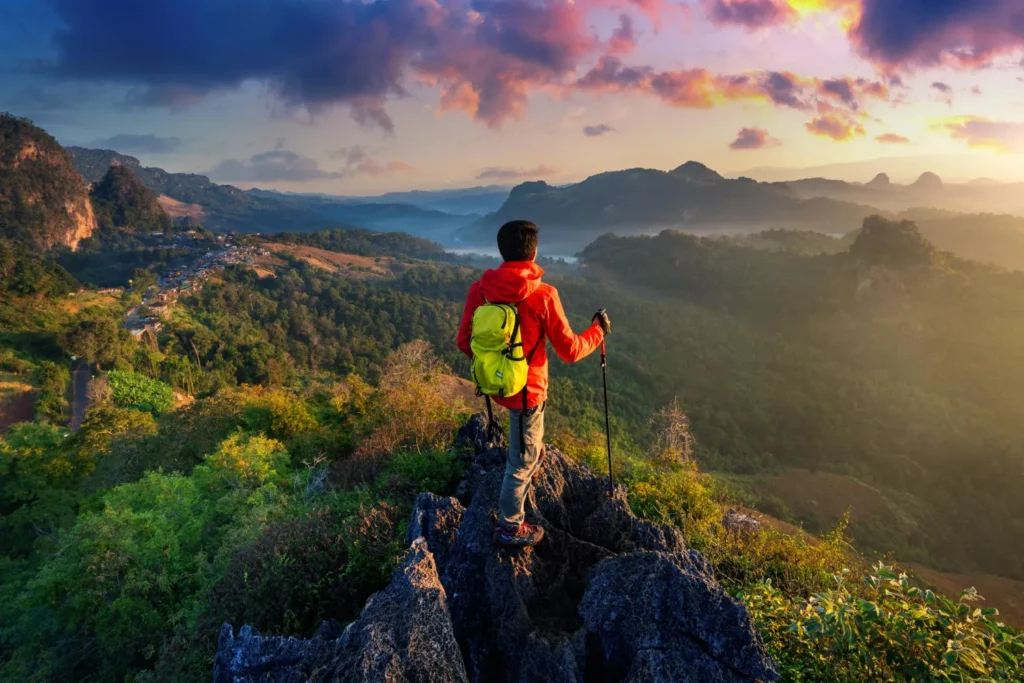Introduction
Nestled in the province of Batangas and visible from the ridges of Tagaytay, Lake Taal is unlike any other lake on Earth. It houses the Taal Volcano, the second most active volcano in the Philippines, and forms one of the most fascinating geographical wonders—a volcano within a lake within a volcano. This natural anomaly has piqued the interest of geologists, nature lovers, and adventure travelers from around the globe.
While often overshadowed by more commercial tourist spots, Lake Taal remains a hidden gem that blends natural beauty with geological intrigue. Its serene waters and striking volcanic island create a picturesque landscape, yet beneath the calm exterior lies a highly dynamic and volatile geological system. For those of us keen to explore nature’s complexities and Earth’s living geology, this place offers both stunning visuals and educational depth. In this comprehensive guide, we’ll dive into the lake’s formation, explore things to do, understand safety measures, and much more.
Read More: 7 Largest and Most Dangerous Volcanoes by Continent You Should Fear
What Makes Lake Taal So Unique?
Lake Taal is one of the most intriguing destinations in Southeast Asia, offering geological wonders, rare species, and a deep cultural history.
A Geological Marvel
Lake Taal is situated within a large caldera formed by prehistoric eruptions. This caldera later filled with water, creating the present-day lake. In the middle of this lake sits Taal Volcano, which itself contains a crater lake, making it a lake within a volcano within a lake. This rare formation exists in only a few places worldwide, making it a subject of international scientific interest.
Read More: Volcanic Eruption Prediction in 2025: 5 Proven Methods for Accurate Forecasting
The Volcanic Island of the Philippines
What sets this lake apart is that its island isn’t just any landmass—it’s an active volcano. Taal Volcano has erupted more than 30 times since the 16th century. Its most recent eruption in January 2020 sent ash across Metro Manila and led to the temporary evacuation of thousands.

Lake Taal also hosts a unique ecosystem. Its water contains sulfur and other volcanic minerals, giving it a distinct chemistry. It’s home to species like the Tawilis, the only freshwater sardine in the world, and Hydrophis semperi, a rare freshwater sea snake.
Read More: You Won’t Believe What’s Happening to Lakes Around the World! The Shocking Truth Revealed!
Key Takeaway
Here are seven facts that make this volcanic island of the Philippines truly remarkable:
● Lake Taal holds a volcano that has its own lake inside.
That’s right — Taal Volcano sits in the middle of Lake Taal, and inside the volcano’s crater is another small lake. It’s a lake within a volcano within a lake, a rare geological phenomenon.

● Taal Volcano is one of the world’s smallest active volcanoes.
Standing at just 1,020 feet (311 meters), Taal Volcano has erupted more than 30 times in recorded history.
Read More: Explosive Threat: Top 10 Most Dangerous Volcanoes on Earth
● The lake was formed by ancient eruptions.
Lake Taal lies in a massive caldera formed by ancient volcanic activity. Over time, it filled with water, creating the present lake.
● It’s home to the world’s only freshwater sardine.
The Tawilis fish is endemic to Lake Taal, making it one of the few lakes globally with a species found nowhere else.
● Lake Taal’s water contains volcanic minerals.
Due to its active volcanic base, the lake’s water is slightly sulfuric and supports only specialized aquatic life.
Read More: Don’t Miss These 5 Hidden Hot Springs: Your Secret to Ultimate Relaxation
● It’s just two hours from Manila.
Despite its unique features, Lake Taal is easily accessible, making it a popular day-trip destination.
● It’s one of the most photographed spots in the Philippines.
The view of the volcanic island of the Philippines from Tagaytay is iconic, attracting thousands of visitors each year.
Read More: Catatumbo Lightning: 8 Incredible Facts about the Mystery of Maracaibo Lake
Where is Lake Taal, and How Do You Get There?
Easy Access from Manila
Located roughly 60 kilometers south of Manila, Lake Taal is very accessible for both local and international tourists. Most travelers reach it by heading to the city of Tagaytay, which offers panoramic views of the lake and volcano.
| Starting Point | Mode of Transport | Estimated Travel Time |
|---|---|---|
| Manila | Private Car | 2 hours |
| Manila | Bus + Tricycle | 2.5 – 3 hours |
| NAIA Airport | Car/Taxi | 2 – 2.5 hours |
Best Routes
- By Car: Take the South Luzon Expressway (SLEX) and exit at Santa Rosa, then head to Tagaytay.
- By Public Transport: Buses to Tagaytay are available from Cubao and Buendia terminals in Manila.
Top Attractions and Activities at Lake Taal
1. Viewpoints from Tagaytay

- People’s Park in the Sky
- Sky Ranch Tagaytay
- Picnic Grove
Each of these spots offers breathtaking views of Lake Taal, especially during sunrise and sunset.
Read More: 15 Incredible Places to See on Your California Road Trip for an Unbeatable Experience
2. Taal Volcano Hike (Note: Currently Restricted)
Before the 2020 eruption, tourists could hike to the main crater. As of now, this activity is restricted due to ongoing volcanic activity.
3. Boat Tours on Lake Taal
- Local boatmen offer guided tours around the volcanic island.
- These tours provide an up-close look at the volcanic island of the Philippines.
Read More: 10 Deepest Lakes in America: A Journey into Depth and Beauty
4. Taal Heritage Town
Just a short drive from the lake, this historic town features:
- Spanish-era ancestral homes
- Taal Basilica – the largest Catholic church in Asia
- Local crafts and embroidery shops
5. Local Cuisine
- Bulalo: Beef marrow soup, perfect for Tagaytay’s cool weather
- Tawilis: Freshwater sardine unique to Lake Taal
- Buko Pie and Halo-Halo: Popular Filipino desserts

Read More: Freshwater vs. Saltwater: Do You Know 3 Most Important Distinctions?
Taal Lake Travel Tips & Safety Guidelines
Best Time to Visit
The ideal time to explore Lake Taal is during the dry season, from November to April. Avoid visiting during the rainy season due to possible travel disruptions and volcanic activity.
Read More: The Banded Rocks of Hosta Beach, Scotland: A Stunning Geological Wonder You Must See
What to Pack
- Lightweight clothing
- Sunblock and hats
- Face masks (ashfall precautions)
- Binoculars and camera

Safety Precautions
- Check volcanic activity updates before planning your trip
- Respect safety zones and local regulations
- Avoid swimming in the lake due to sulfur content
Read More: Hidden Secrets at the Bottom of Lake Tahoe: Know the 4 Unknown Facts
Dive into Taal’s Rich History and Culture
The history of Taal Volcano dates back thousands of years. Early records from Spanish colonizers describe violent eruptions, some of which reshaped the surrounding landscape. Local folklore often attributes spiritual significance to the volcano, and festivals are held annually in nearby towns to celebrate nature and resilience.
Best Hotels & Restaurants Near Lake Taal
Where to Stay
- Taal Vista Hotel – Luxury hotel with panoramic lake views
- Escala Tagaytay – Boutique stay with infinity pool
- Casa Cecilia – Budget-friendly guesthouse
Where to Eat
- Balay Dako – Filipino cuisine with volcano views
- Antonio’s Restaurant – Fine dining in Tagaytay
- Bag of Beans – Coffee and pastries with cozy ambiance
Key Takeaway
Lake Taal is more than a tourist spot—it’s a geological treasure in the Philippines that deserves both admiration and protection.
Final Thoughts: Why Lake Taal Should Be On Your Bucket List
Lake Taal isn’t just a beautiful place—it’s a living geological museum that teaches us about the Earth’s dynamic forces. Its unusual structure and active volcanic island offer a unique combination of science, culture, and natural beauty. Whether we’re standing at the edge of Tagaytay Ridge or learning about the area’s volcanic history, this place keeps us both grounded and in awe of nature’s complexity.
Given its proximity to Manila, it’s an accessible yet enriching destination. While some activities are currently limited due to safety measures, the experience of seeing this rare natural formation is itself unforgettable. Let’s not just travel; let’s understand, respect, and appreciate the marvels our planet has shaped over millennia.
FAQs
1. Is it safe to visit Taal Volcano?
Only from a distance; hiking is restricted due to recent volcanic activity.
2. Can you swim in Lake Taal?
Swimming is not advised due to sulfur and volcanic minerals.
3. What is the best time to visit Lake Taal?
Visit between November and April for clear weather and scenic views.
4. How long is the trip from Manila to Lake Taal?
Approximately 2 to 2.5 hours by car.
5. Is the volcano on an island in Lake Taal active?
Yes, Taal Volcano is one of the Philippines’ most active volcanoes.
6. What makes Lake Taal unique?
It’s a lake with a volcano that has a lake in its crater—a geological rarity.

